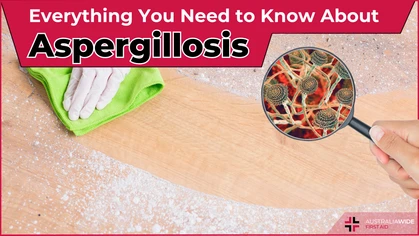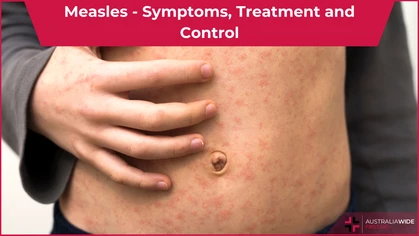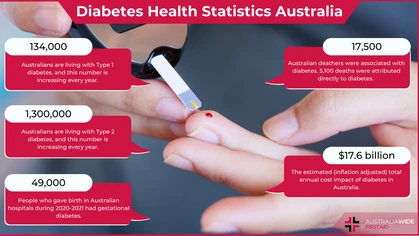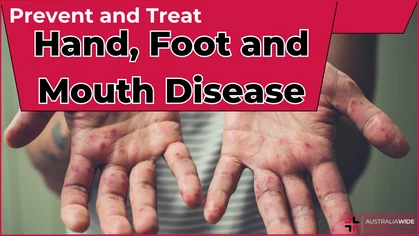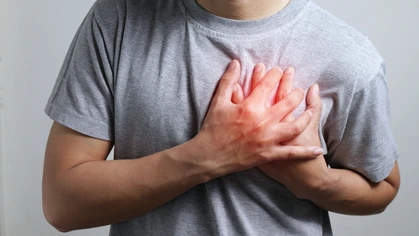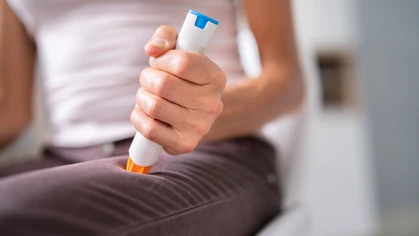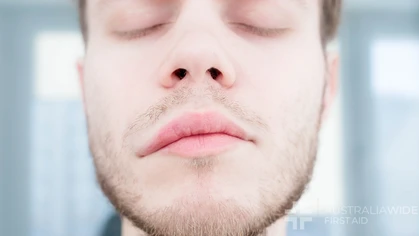How to Respond to Heart Problems in Children - Tips for Parents

Disease
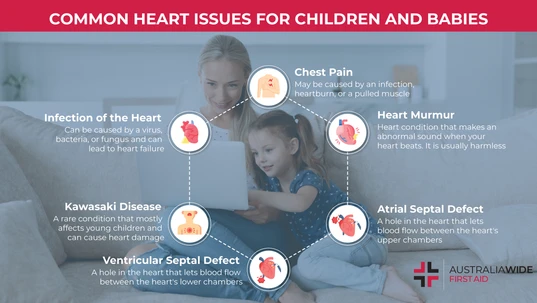
Heart problems are a leading cause of death in Australian children and babies. These problems range from congenital heart defects like 'a hole in the heart', to arrhythmia and congestive heart failure. It is important to know their signs and symptoms.
In Australia, heart problems are the leading cause of death in children. This means that it's important for parents to be aware of the signs and symptoms of heart problems, and to know how to respond if their child experiences a heart issue. In this article, we'll provide tips on how to recognise heart problems in children, and what to do if your child is experiencing a heart issue.Congenital Heart Defects
Congenital heart defects are the most common type of heart problem in newborns. These defects can range from minor issues that don't require treatment, to more serious defects that may require surgery. Some common congenital heart defects include:- Patent Foramen Ovale (PFO): A hole in the heart that doesn't close after birth. This hole is usually harmless and doesn't require treatment.
- Atrial Septal Defect (ASD): A hole in the wall between the heart's two upper chambers. This hole can cause blood to flow from the left heart chamber to the right heart chamber, resulting in an increased heart rate and heart murmur. ASD can usually be repaired with surgery; however, this is not always required.
- Ventricular septal defect (VSD): A hole in the wall between the heart's two lower chambers. This hole can cause blood to flow from the left heart chamber to the right heart chamber, resulting in an increased heart rate and heart murmur. VSD can usually be repaired with surgery.
- Tetralogy of Fallot: A combination of four heart defects that includes a VSD, ASD, deformed heart valve, and an obstruction in the heart's main pumping chamber. This condition is serious and can be life-threatening. Tetralogy of Fallot can be treated with surgery, but some children may need a heart transplant.
Congestive Heart Failure in Children
Congestive heart failure is a condition that occurs when the heart can't pump enough blood to meet the body's needs. This can be caused by a heart defect, heart disease, or another condition that damages the heart. Congestive heart failure can be a serious condition that requires hospitalisation.High Blood Pressure
High blood pressure is a condition that occurs when the heart has to work harder than normal to pump blood through the body. This can be caused by a heart defect, kidney disease, or another condition that damages the heart or kidneys. High blood pressure can be a serious condition that requires treatment. Consulting with a doctor is important if you believe your child has high blood pressure.Arrhythmia or Heart Murmurs
An arrhythmia is an irregular heart rhythm. This can be caused by a heart defect, heart disease, or another condition that damages the heart. Arrhythmias can be serious and require treatment. A heart murmur is an abnormal heart sound that can be caused by a heart defect, heart disease, or another condition that damages the heart. Heart murmurs can be harmless, or they can be a sign of a serious heart condition. If you think your child has a heart murmur, it's important to see a doctor as soon as possible.Chest Pain
Chest pain is a common symptom of heart problems. This pain can be caused by a heart attack, heart disease, or another condition that damages the heart. If you think your child is having a heart attack, it's important to call 000 immediately. If you think your child has chest pain, it's important to see a doctor as soon as possible. This pain can be a sign of a serious heart condition that requires treatment.Kawasaki Disease
Kawasaki disease is a rare condition that can damage the heart. This condition usually affects children under the age of five. Kawasaki disease can be serious and requires hospitalisation. Kawasaki disease is caused by an infection and can be treated with antibiotics. The heart may become damaged even after the infection has been treated, so it's important to see a doctor as soon as possible if you think your child has Kawasaki disease.Signs and Symptoms
There are a few signs and symptoms that may indicate your child is experiencing heart problems. These include:- Shortness of breath
- Rapid breathing
- Chest pain or tightness
- Fatigue
- Light-headedness or dizziness
- Pale skin
- Sweating
- Irregular heartbeat
When to Seek Medical Advice
If you think your child has a heart problem, it's important to see a doctor as soon as possible. These conditions can be serious and require treatment. Early diagnosis and treatment are important for the best outcome. If you're not sure whether your child has a heart problem, it's always best to err on the side of caution and see a doctor. Heart conditions can be difficult to diagnose, so it's important to get medical help if you're concerned about your child's heart health.Diagnosis
There are a few tests that can be used to diagnose heart problems in children. These tests may include:- A physical exam
- A heart health history
- Blood tests
- An electrocardiogram (ECG)
- An echocardiogram
Treatment
The treatment for heart problems in children will depend on the specific condition. Treatment may include:- Medications
- Surgery
- Lifestyle changes
Prevention
There are a few things you can do to help prevent heart problems in children. These include:- Get your child vaccinated against infections such as measles, mumps, and rubella.
- Avoid smoking during pregnancy
- Feed your child a healthy diet
- Keep your child active
- Take your child to regular doctor's appointments for checkups
First Aid for Children with Heart Problems
If your child is experiencing a heart problem, it's important to act quickly and provide first aid. Follow DRSABCD and call Triple Zero (000) for an ambulance. Depending on findings, your child may subsequently need to receive treatment for a specific heart condition. Do not try to drive to the hospital yourself. Call an ambulance so your child can receive medical attention as quickly as possible. To ensure you are able to respond as quickly as possible, we recommend completing our Child care first aid course. If you think your child has a heart problem, it's important to see a doctor as soon as possible. These conditions can be serious and require treatment. Early diagnosis and treatment are important for the best outcome. To ensure you are able to respond quickly if your child experiences a heart emergency, we recommend completing our CPR course. At Australia Wide First Aid, our heart first aid courses are designed to teach you how to respond to heart emergencies in children. We offer both face-to-face and online courses so you can learn at a time and place that is convenient for you. Our courses are taught by experienced and qualified instructors who are passionate about first aid. For more information or to enrol in a course, please visit our website or contact us today.
Originally published at
https://www.australiawidefirstaid.com.au/resources/responding-to-heart-problems-in-children
as part of the Australia Wide First Aid Articles Library



